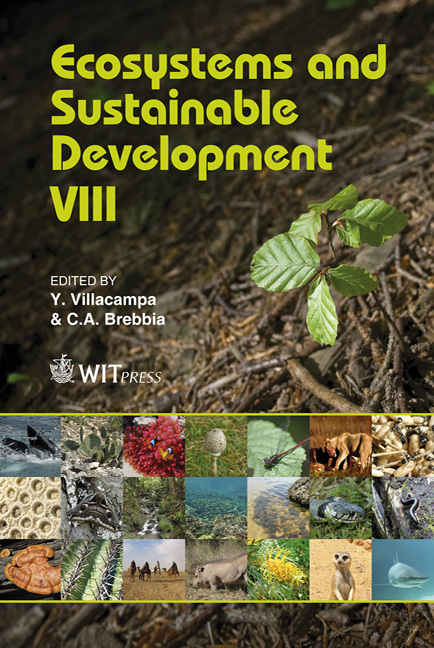Biometric Analysis Of Eucalyptus Forests In The Five Initial Years Of Development
Price
Free (open access)
Transaction
Volume
144
Pages
7
Page Range
223 - 229
Published
2011
Size
2398 kb
Paper DOI
10.2495/ECO110201
Copyright
WIT Press
Author(s)
A. L. T. Fernandes, T. de M. Florêncio & M. F. de Faria
Abstract
This research is aimed at evaluating the effects of irrigation and mineral nutrition on the growth and production of eucalyptus (Eucalyptus grandis) cultivated in the region of Triângulo Mineiro. The experiment was conducted at the Farm School of Universidade de Uberaba, which has 850 m of altitude, in redyellowish Latosoil. Irrigated treatments and non-irrigated treatments with different nutritional conditions (25%, 50% and 100% of the recommended doses) were compared. It was evaluated the parameters of diameter at breast height and growth in a period of five years of conducted experiment; the final productivity of wood was also determined at the end of that period. Even though results were statistically different throughout the years, at the end of the analyzed period it was observed that irrigated treatments showed the biggest biometric values as well as the biggest rates of annual medium increment. Proximity of values may have occurred due to excessive rainfall at the local, making water more available to the non-irrigated treatments. Keywords: commercial wood, irrigation, fertilization. 1 Introduction According to FAO, Brazil is the second most forested country in the world with almost 477.77 millions of hectares, and the fourth country with the biggest area dedicated to plantation forestry. However, the country lacks adequate information and functional mechanisms. The usefulness of eucalyptus is evident: virtually all parts of the tree are exploited [3]
Keywords
commercial wood, irrigation, fertilization





